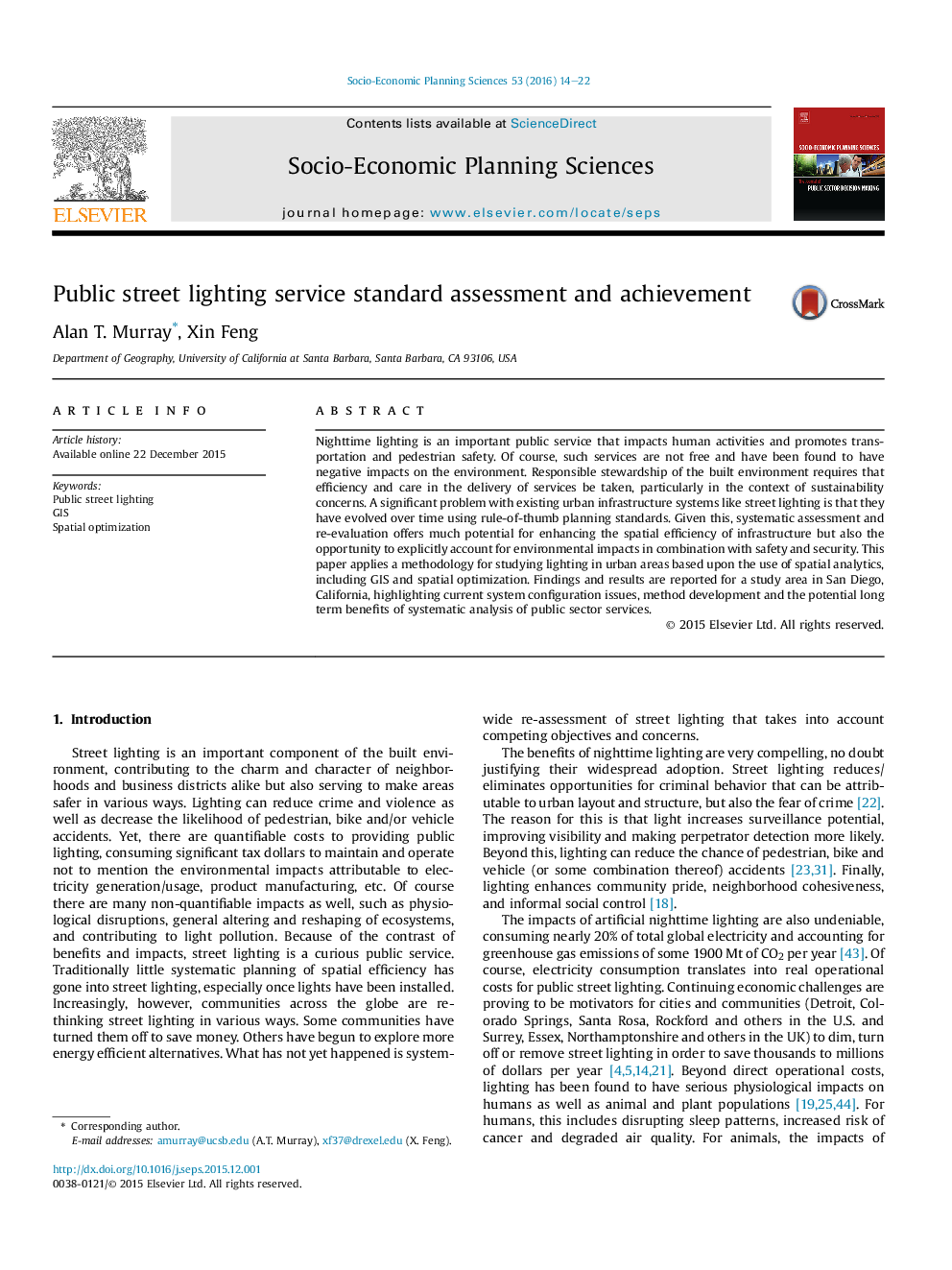| Article ID | Journal | Published Year | Pages | File Type |
|---|---|---|---|---|
| 986770 | Socio-Economic Planning Sciences | 2016 | 9 Pages |
•Addressed an important public service issue of nighttime lighting.•Examined neighborhood lighting to assess efficiency issues and achievement of established safety standards and guidelines.•Detailed location modeling based approach for assessment and planning.•Illustrated how safety and security needs could be satisfied, sensitive to long term costs.
Nighttime lighting is an important public service that impacts human activities and promotes transportation and pedestrian safety. Of course, such services are not free and have been found to have negative impacts on the environment. Responsible stewardship of the built environment requires that efficiency and care in the delivery of services be taken, particularly in the context of sustainability concerns. A significant problem with existing urban infrastructure systems like street lighting is that they have evolved over time using rule-of-thumb planning standards. Given this, systematic assessment and re-evaluation offers much potential for enhancing the spatial efficiency of infrastructure but also the opportunity to explicitly account for environmental impacts in combination with safety and security. This paper applies a methodology for studying lighting in urban areas based upon the use of spatial analytics, including GIS and spatial optimization. Findings and results are reported for a study area in San Diego, California, highlighting current system configuration issues, method development and the potential long term benefits of systematic analysis of public sector services.
